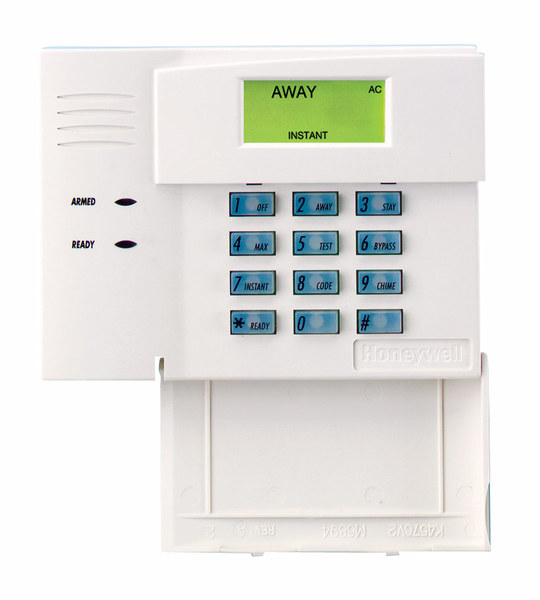Resideo Discontinues the 6148 Keypad Family
Posted By Julia RossResideo announced this week that the 6148 keypad family is discontinued upon stock exhaustion. The official technical notification confirms that the 6148, 6148ICON, 6148EX, and 6148SP are all going away. If you need a similar, budget-friendly alternative look no further than the 6150.

The 6148 was never a glamorous keypad. It didn't have a touchscreen. It didn't talk to you. It was just a simple, reliable Fixed English keypad that did exactly what it was supposed to do. And honestly, that's what made it great.
The 6148 was the kind of keypad you could explain to your grandmother over the phone. You pressed buttons, the system responded, and that was that. No learning curve. No software updates. No wondering if the display would freeze. Back when touchscreens were still a novelty, most homeowners just wanted something that worked. The 6148 worked.
The 6148ICON was the same idea but with pictures instead of words. Little icons showed you what each button did. Some installers loved it. Others thought it was unnecessary. But it found its audience with customers who preferred visual cues over text.
The 6148EX added a tamper switch, which made it popular for commercial installations where someone might try to mess with the keypad. The 6148SP served Spanish-speaking customers. Each version filled a specific need in the market.
Now they're all going away because that's how this industry works. Parts become obsolete. Manufacturing priorities shift. Products that served us well for years eventually reach the end of their run.
The good news is that Resideo has recommended solid replacements. The Honeywell 6150 Fixed English Keypad takes over for the 6148, 6148ICON, and 6148EX. It has the same Fixed English display and basic functions, plus four dedicated function keys for quick arming and emergency buttons. The only thing missing is the tamper feature from the 6148EX, so keep that in mind if tamper protection matters to your installation.
For the 6148SP, Resideo suggests upgrading to the First Alert VISTAH3 system with the VISTAHPKP or VISTAHLKP keypads. These offer Spanish and Portuguese language support on a 2x16 alpha display.
If you're still running 6148 keypads on your VISTA system, now is the time to think about stocking up or planning your upgrade. Once the remaining inventory is gone, it's gone for good.
It's strange to get sentimental about a keypad. But the 6148 represents an era of alarm products that valued simplicity and reliability above all else. No apps. No cloud connections. Just a keypad on the wall that lets you arm and disarm your system. There's something to be said for that.
The alarm industry keeps moving forward. Panels get smarter. Keypads get touchscreens. Everything connects to the internet. That's progress, and it's mostly good. But every now and then, when a product like the 6148 gets discontinued, I think about how far we've come and what we've left behind along the way.
If you have questions about replacing your 6148 keypads or need help choosing the right option for your VISTA system, reach out to us at Alarm Grid. The best way to reach us is at support@alarmgrid.com. We're here from 9:00 AM - 8:00 PM EST Monday - Friday and we're happy to help you navigate the transition. Check out our alarm monitoring plans while you're at it.

















